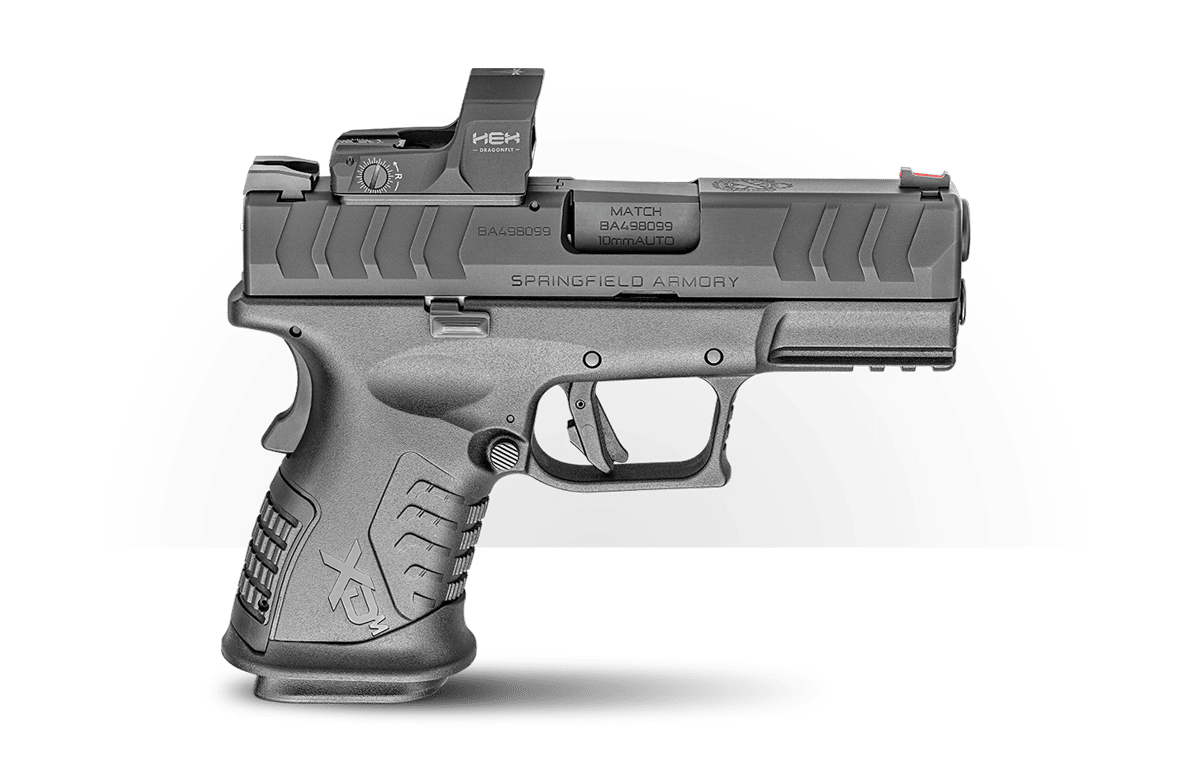Strong-Side Draw Tactics from Open-Front Garments
August 14th, 2022
7 minute read
More Americans now carry concealed handguns lawfully in public than at any time in living memory. Trends related to this can change over time; for example, appendix carry and pocket carry are trending strongly at the moment. Nonetheless, “strong side hip” carry seems to remain the single most popular mode. Let’s look at some ways to enhance efficiency in that regard.
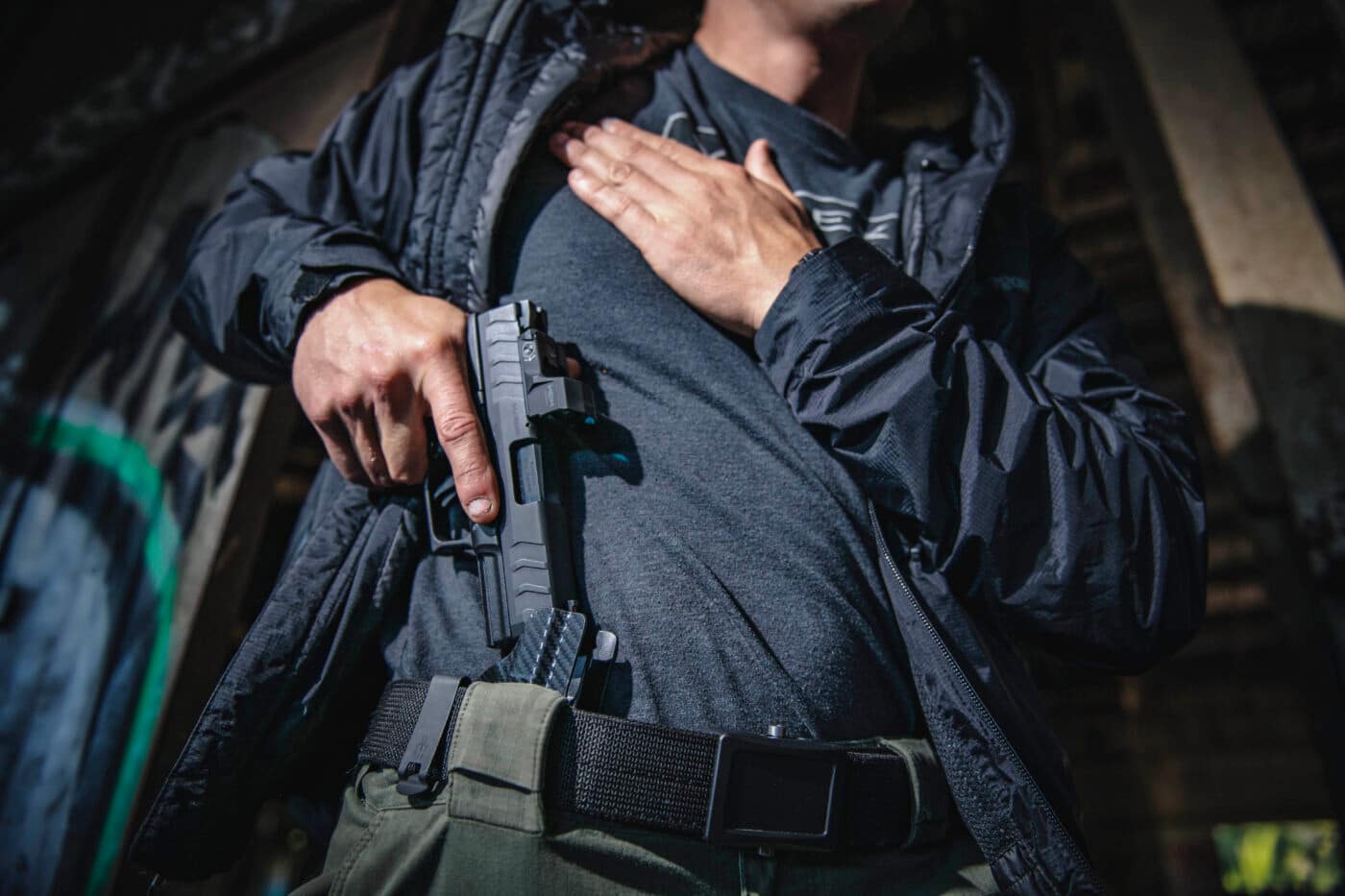
First, we have to consider the cover garment. These break down into two categories: open front and closed front. This article will focus on open-front styles.
These may include jacket, vest or shirt. The presumption is that the operative term in “open front garment” is open! If the suitcoat is buttoned, if the jacket is zipped, it is obviously no longer open front.
Advantages
The majority of belt holsters are designed for dominant hand-side carry. All ranges that allow drawing loaded guns from holsters allow “strong side hip” carry. This is important because any method you cannot practice regularly cannot be counted on for developing a reflexive draw in a life-or-death emergency.
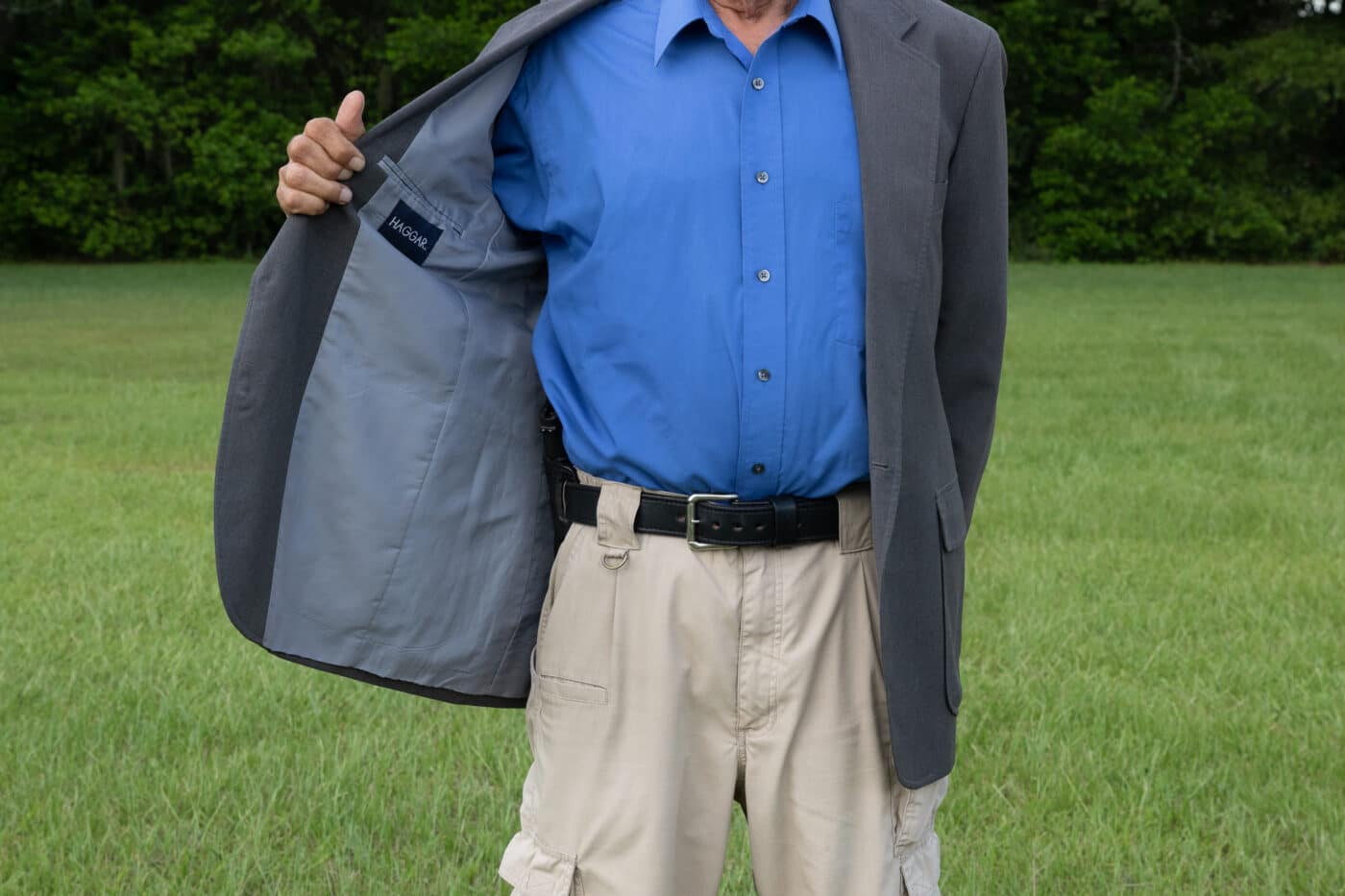
For example, most police ranges do not allow cross-draw carry and many do not allow appendix inside the waistband (AIWB) draws. PPC matches were historically limited to strong side hip holsters, and so were IDPA matches from their inception in the 1990s until 2022, when AIWB was approved. However, some host ranges still do not allow AIWB even at IDPA matches. Many private shooting schools restrict holsters to strong side hip as well.
Disadvantages
For most of an average day, our hands will be toward the front of our body when a danger signal comes. The hip, and particularly behind the hip, will be a farther reach to get at the gun than, say, the appendix position. This makes hip draw slightly slower.
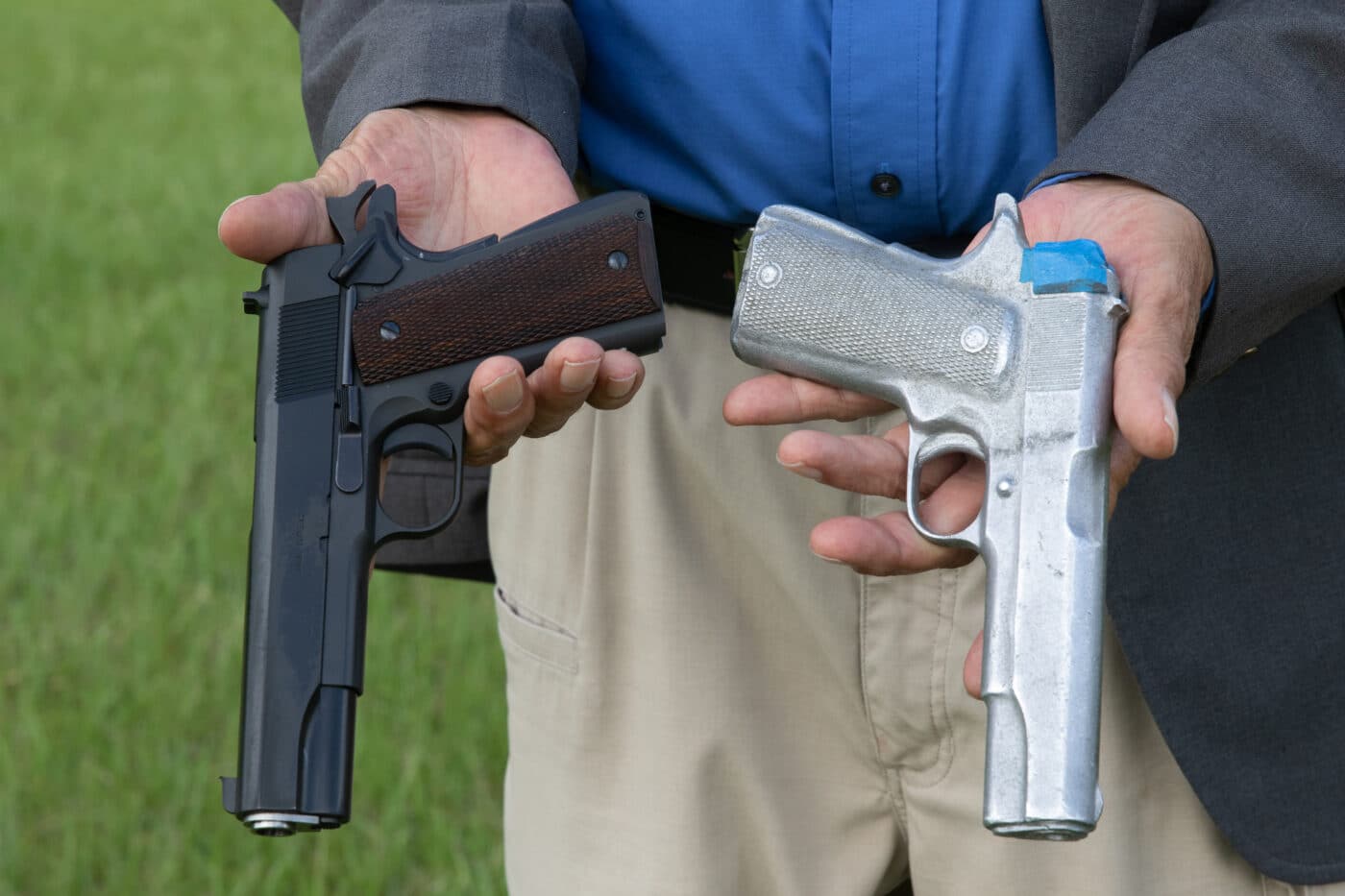
There is also the matter of “wounded defender” draws. If the dominant arm is taken out of action before you can reach the gun, strong-side hip is much tougher for the “weak hand” to reach than if the weapon was in a cross-draw position or in an appendix carry.
Be a Clock-Watcher
In holster-wearing terminology, it has become customary to refer to placement in relation to a clock face. Picture the human body in cross-section, at the waist. Front centerline — the navel, or common belt buckle placement — is 12 o’clock. The lumbar spine is at 6 o’clock. The right hip is 3 o’clock, and 9 o’clock marks the left hip. Thus, in strong-side hip carry, the right-handed pistol-packer is carrying somewhere around 3 o’clock.
Now, let’s get more, uh, minute. Carrying at exactly 3 o’clock can be problematic for concealed carry. Uniformed police and security guards get away with it because (A) they carry openly, and concealment is not an issue and (B) the shank of a well-designed uniform holster will be orthopedically curved, with the holstered gun (C) somewhat cushioned at the hip by a thick duty belt and an under-belt beneath.
In concealed carry, the holstered gun at exactly 3 o’clock presses uncomfortably and even painfully on the ileac crest of the pelvic girdle, in the area of the sciatic nerve. Moreover, right there on the edge of the hip the pistol tends to protrude and become obvious, which compromises the “concealed” part of concealed carry.
This is why most people who carry strong side concealed are really locating pistol and scabbard more to 3:30 or 4 o’clock. Here, there’s more soft tissue and less bone and nerve being compressed, especially with an inside the waistband (IWB) holster. Moreover, the drape of the concealing garment coming down from the latissimus dorsi creates a bit of a hollow between ribcage and backside, greatly improving concealment.
Because the pistol has been moved to the rear, this can cause some bulge at the back if the holster is straight up and the butt straight to the rear. This is why so many of the gun world’s favorite strong side concealment holsters have “FBI tilt,” with the muzzle raked to the rear and the butt brought forward. This greatly improves concealability.
Access
The draw can be broken down into two components: access and presentation. Access means getting the gun hand down under the concealment garment and into a proper drawing grasp on the holstered sidearm. Presentation means getting the gun from holster to index in a firing position.
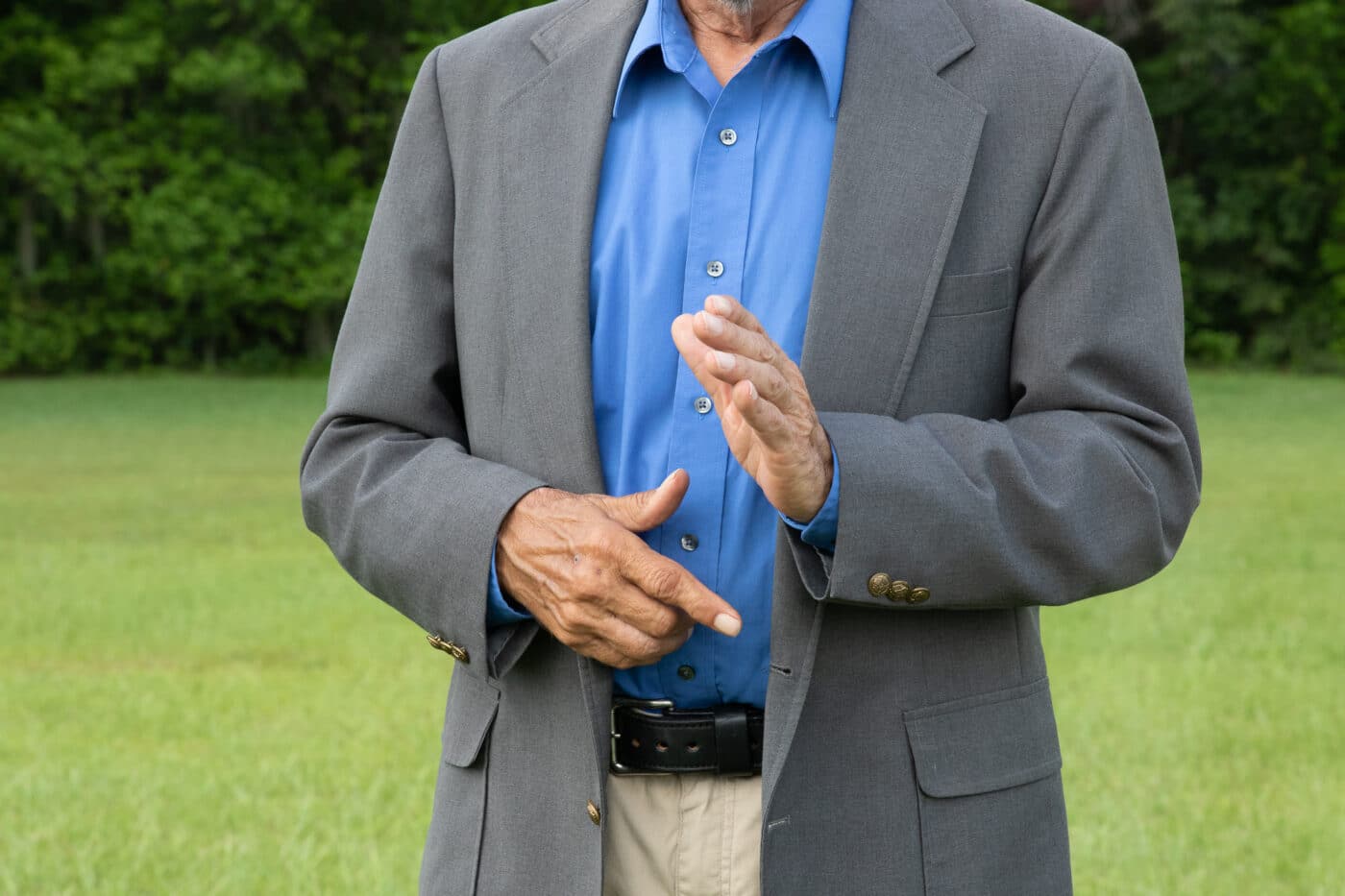
There are several approaches to accessing the pistol holstered beneath an open-front garment. IDPA, the International Defensive Pistol Association, is “the concealed carry sport.” If you go to an IDPA match and find yourself on a 10-person squad, you’ll probably see 10 different techniques for getting the hand to the concealed pistol.
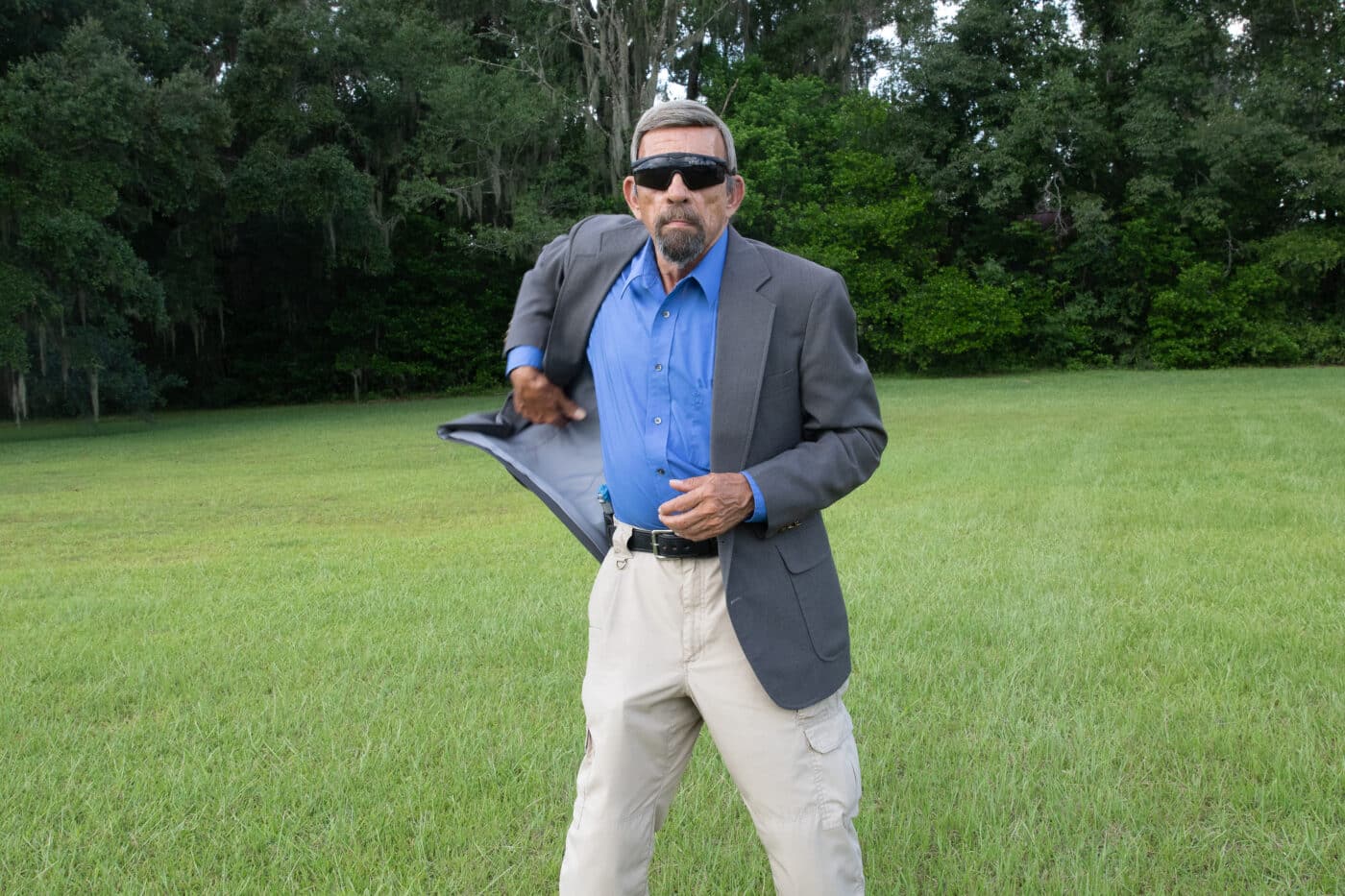
My late mentor Bill Jordan popularized a hip-sway technique in which the holster-side hip was thrown back, to swing the cover garment away and clear a path for the holster. He advocated a few spare cartridges in the pocket on that side to give the jacket momentum to swing away. However, this was also moving the gun away from the reaching hand, and gave a very finite window of opportunity before the coat could fall back over the gun, perhaps fouling the draw. And of course, it wouldn’t work while seated, let alone seat-belted.
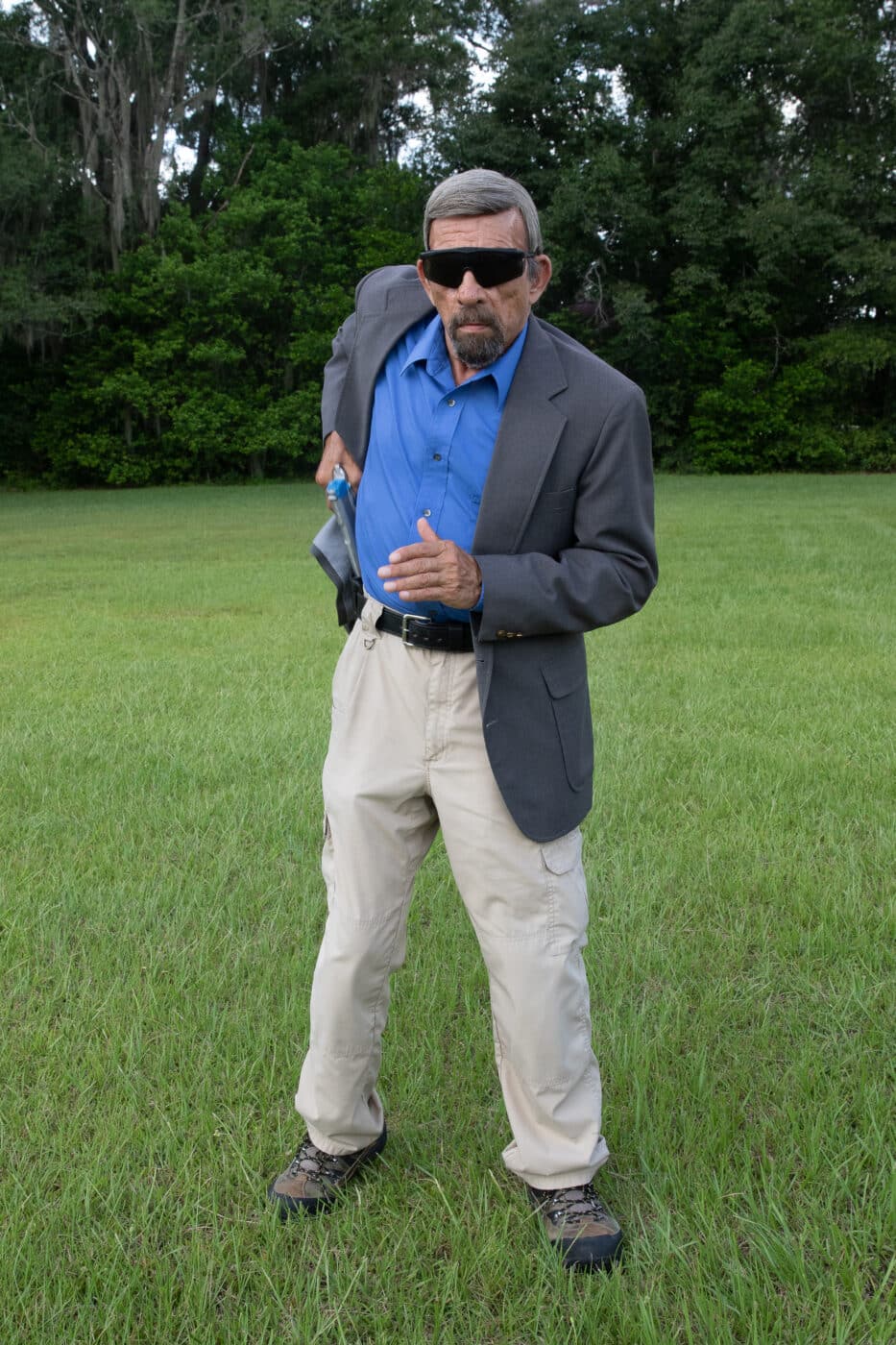
Back in the 1950s, concealed holster pioneer and quick-draw ace Chic Gaylord came up with a method in which his left hand grabbed the garment at the bottom and swept it up to the left, pulling the right side of the jacket completely away from his right-side holster. Later in the 20th century, Jack Manfre, a Chicago PD instructor, rediscovered it and popularized it locally as the “Dracula Draw,” so called because it resembled a movie vampire menacingly opening his cape. However, it required an open space to that side of the shooter, still wouldn’t work seated, and brought the support hand farther from centerline, slowing acquisition of a two-hand hold once the gun was out.
Most people simply grab the garment with their gun hand, throw it aside, and then go for the gun. However, this still leaves a very narrow time window before we get four “Fs”: Fabric Falls on Firearm and Fouls the draw.
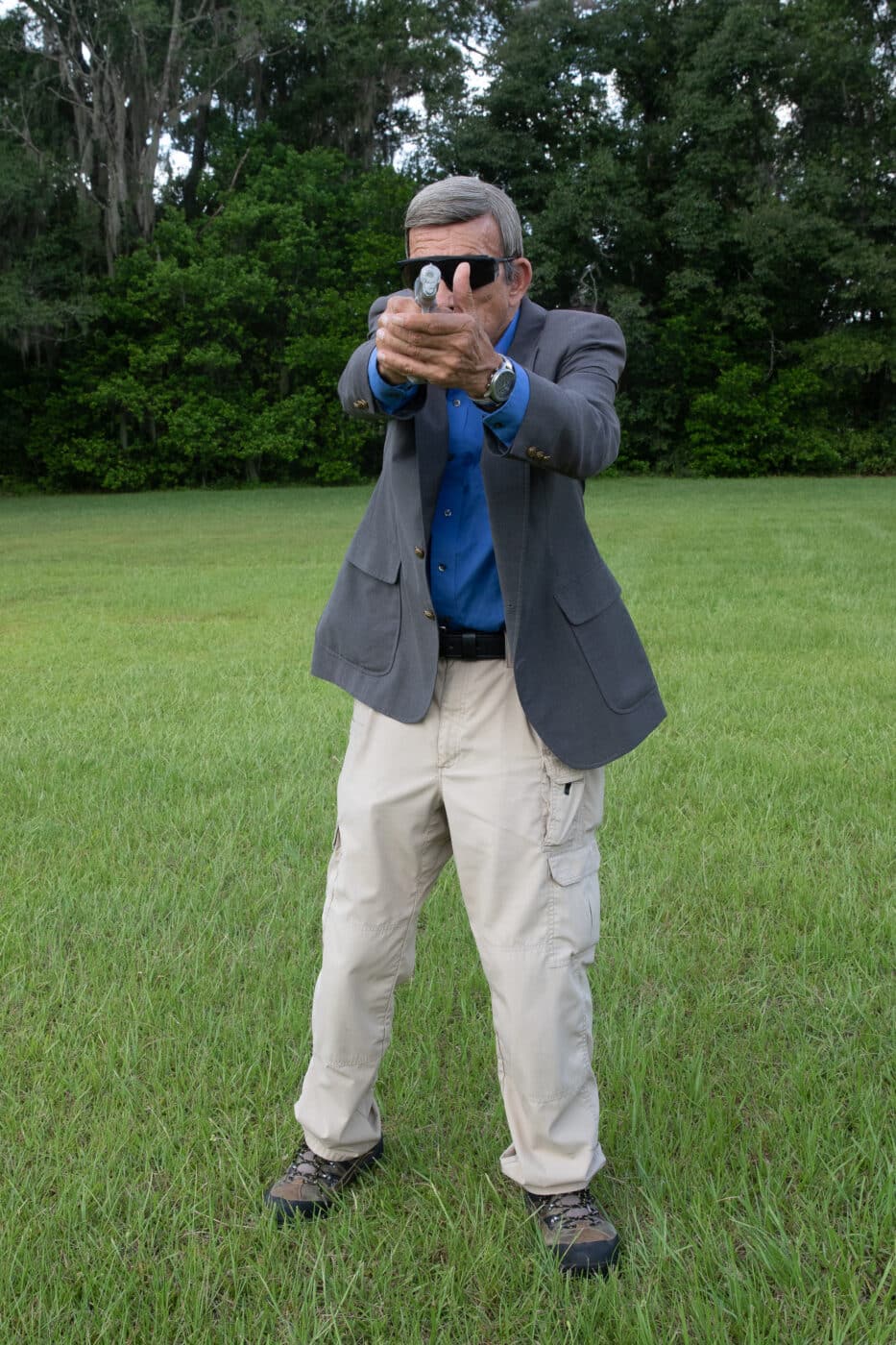
I came up with a technique that has worked well for me and my students, which I call the “reach out and touch yourself” draw. With the trigger finger straight and the three digits below it slightly bent, the gun hand comes to body centerline and touches a little below the solar plexus. Maintaining light contact with those three fingertips, the hand tracks back to just above the pistol: the heel of the hand and the pinky finger push the garment back and hold it back out of the way until the hand can drop down and take a drawing grasp. This is the most foolproof way I’ve found to keep the fabric from fouling between hand and gun until that grasp has been established. It will work seated, seat-belted, on your back or on your belly. It is demonstrated in my “Concealed Carry” video available at Panteao Productions.
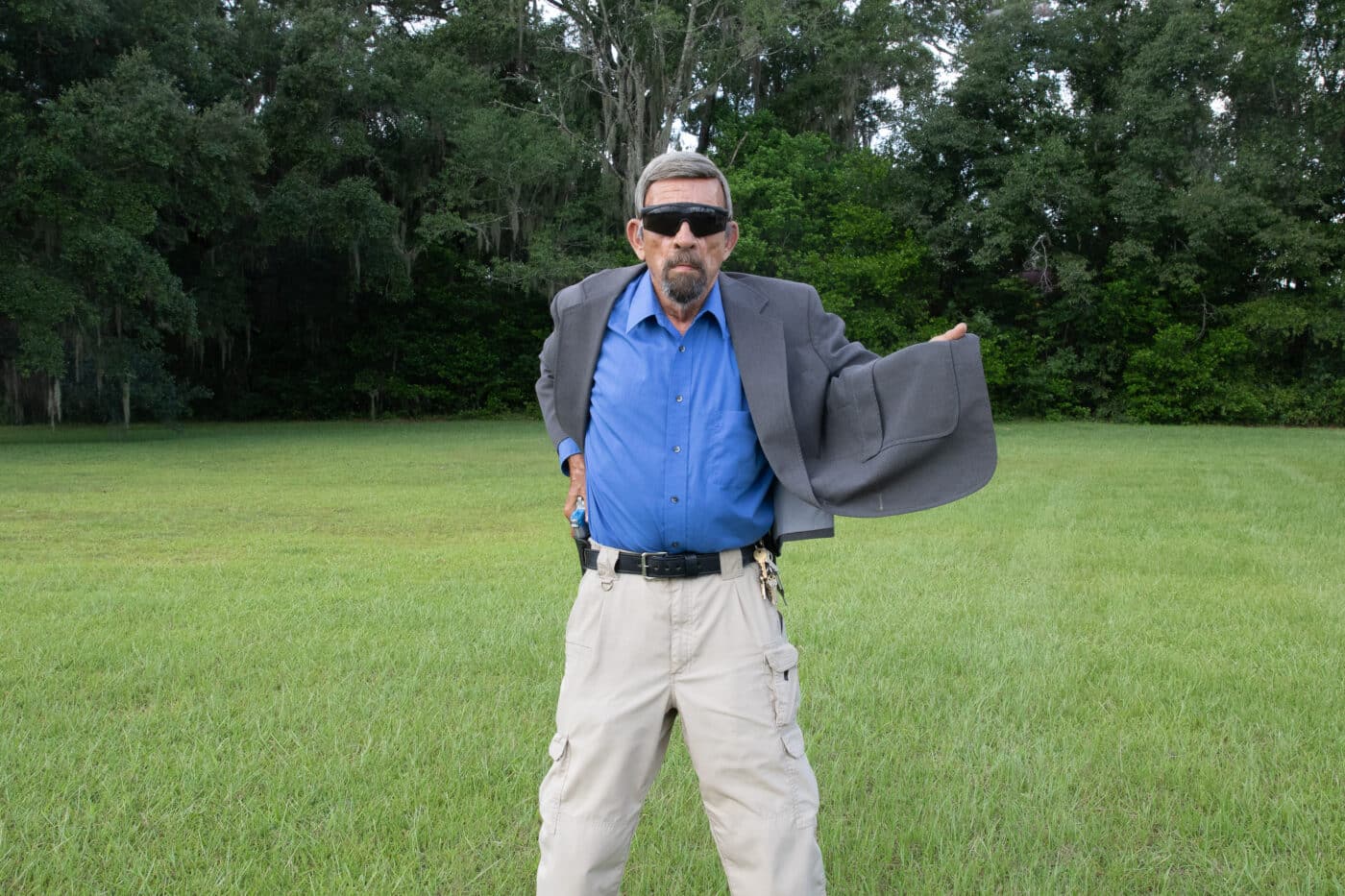
From there, go to the “press-out” draw as quantified by the late, great Todd Louis Green: rock and lock the gun up and out to a retention position high on the ribcage. If there is a fast-closing assailant, you can fire from here and get a reasonable hit. Thrust straight forward, and if circumstances allow a two-hand hold, bring the support hand in from behind the gun muzzle as you index on target.
Support Hand Placement
The popular “flat of the support palm against the torso” will keep that hand from being crossed by the gun, but is not especially efficient for speed of taking a two-hand hold, nor from fighting off an assailant in a close-quarters combatives situation.
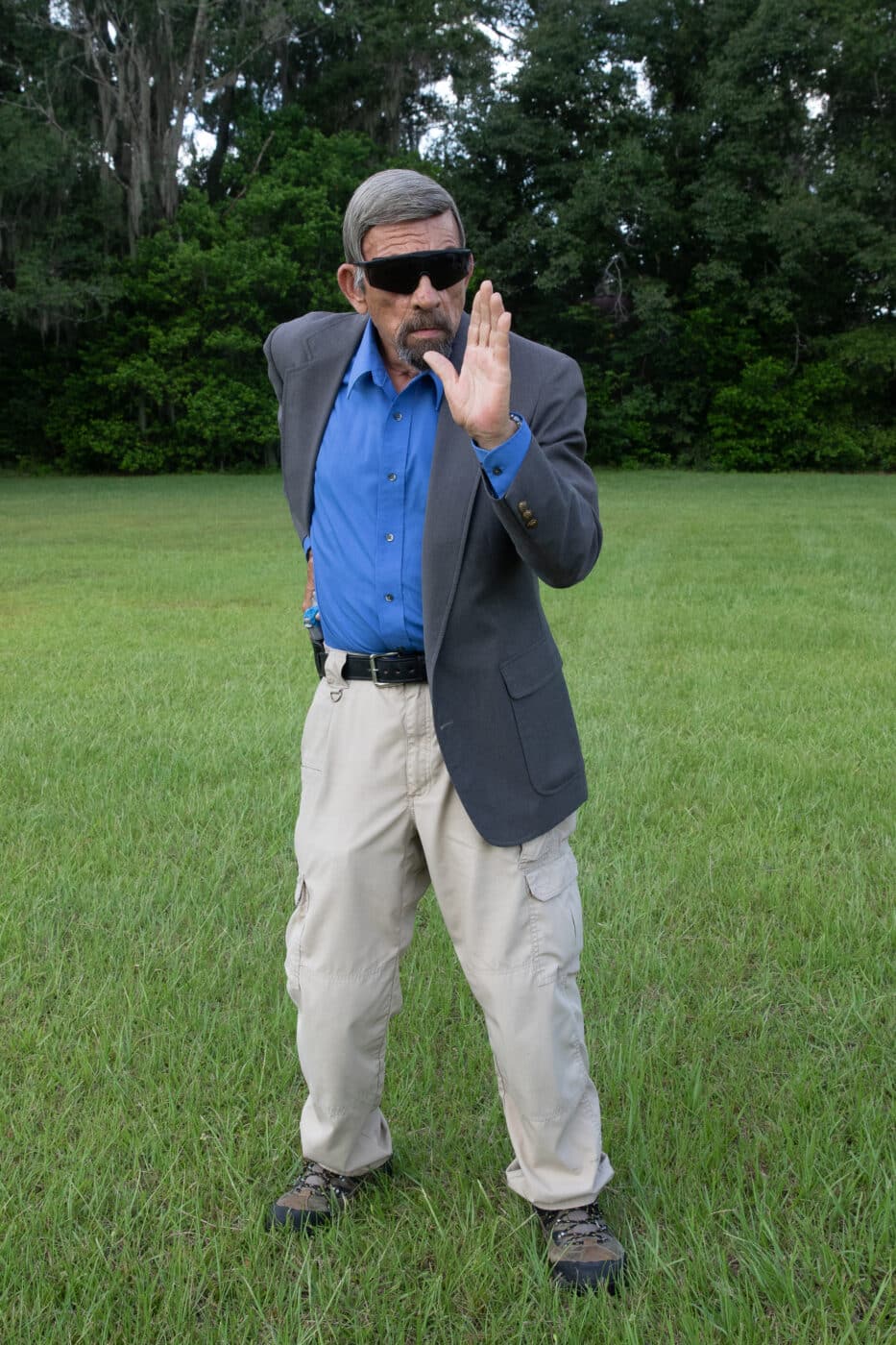
I recommend that during the draw the support hand be positioned with fingers straight, fingertips pointed toward an opponent’s face. This is actually slightly faster for achieving a two-hand hold while still keeping it out of the way of the gun muzzle, but now that hand is much better positioned to block or parry an opponent who is very close.
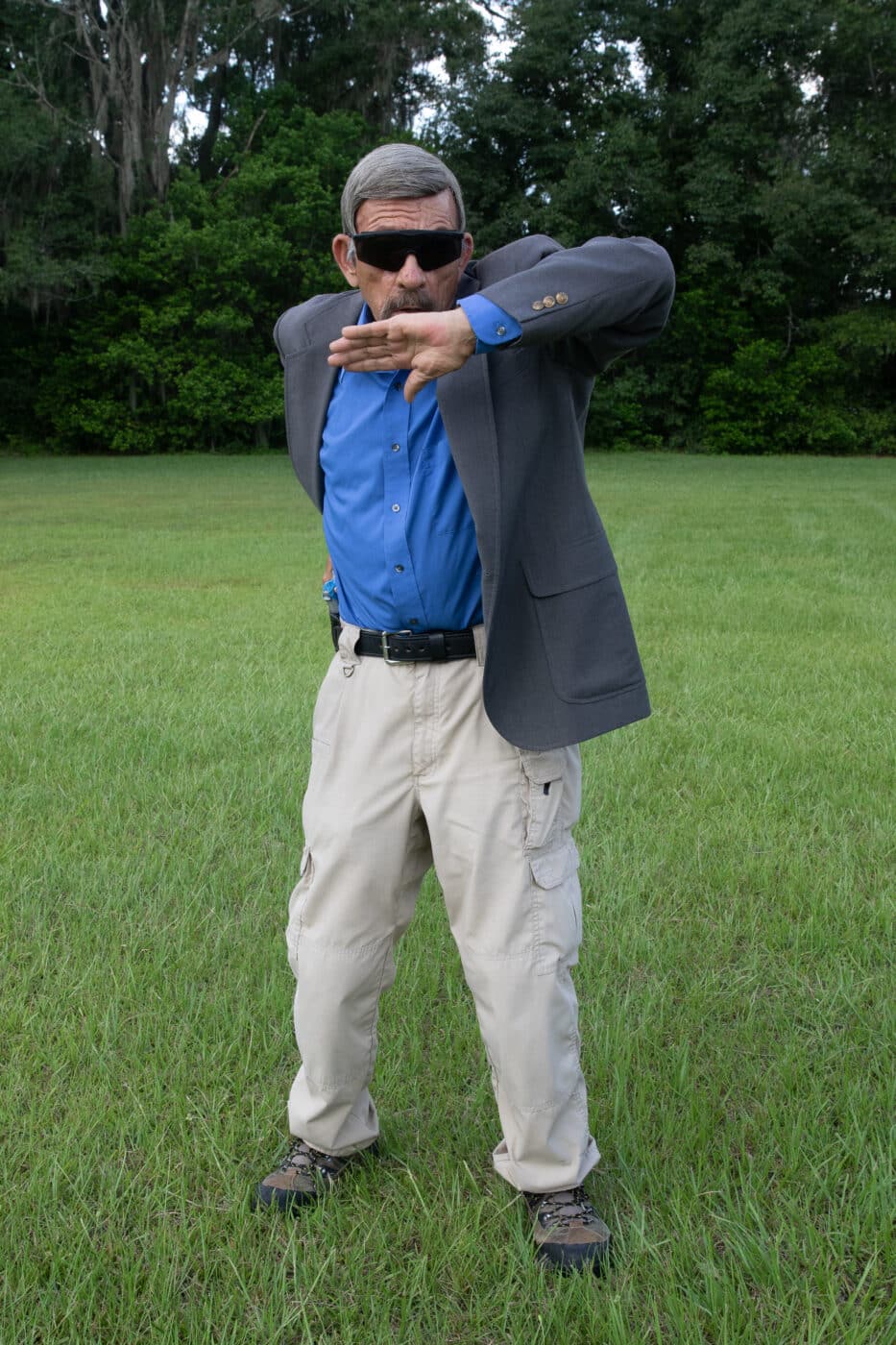
Conclusion
As noted, all of the above is for strong side hip carry beneath an open-front concealment garment. With a closed front concealment garment, the dynamics change significantly … and we’ll go into that in a follow-up article, very soon.
Editor’s Note: Be sure to check out The Armory Life Forum, where you can comment about our daily articles, as well as just talk guns and gear. Click the “Go To Forum Thread” link below to jump in!
Join the Discussion
Featured in this article
Continue Reading
Did you enjoy this article?

 133
133




